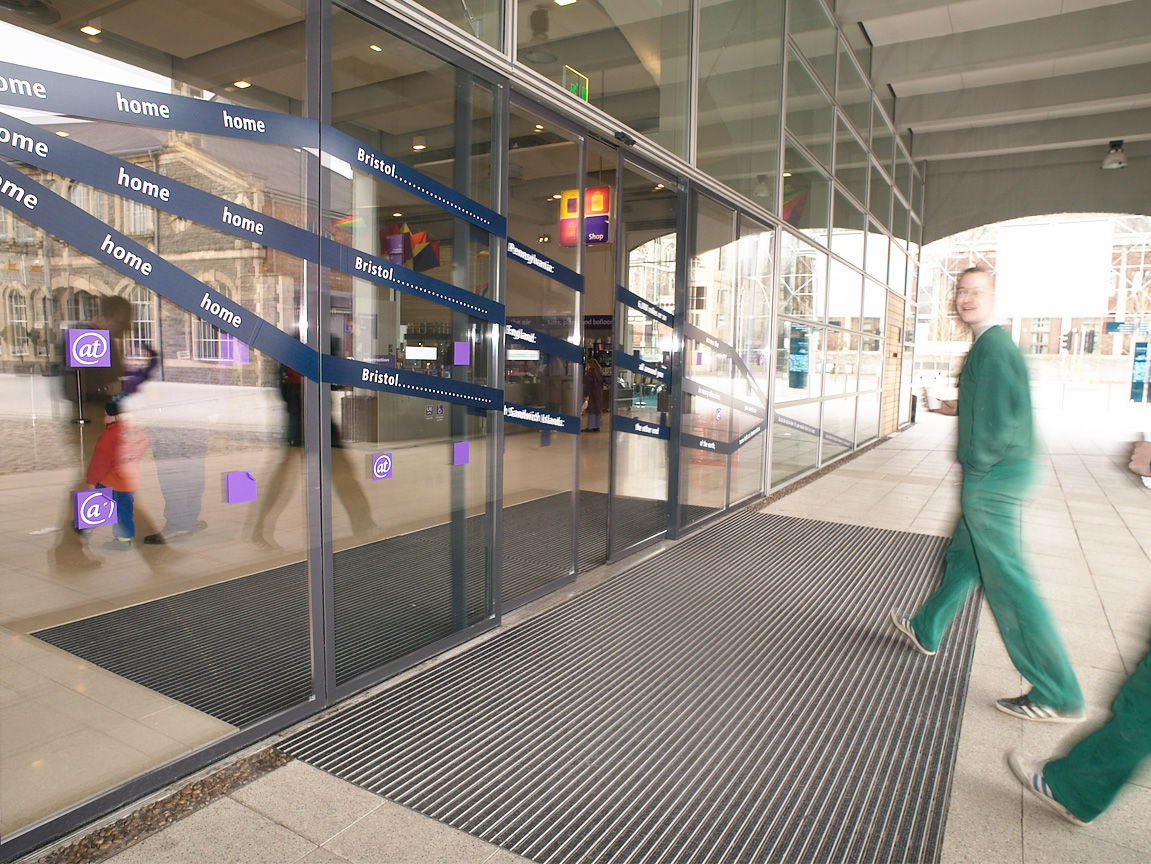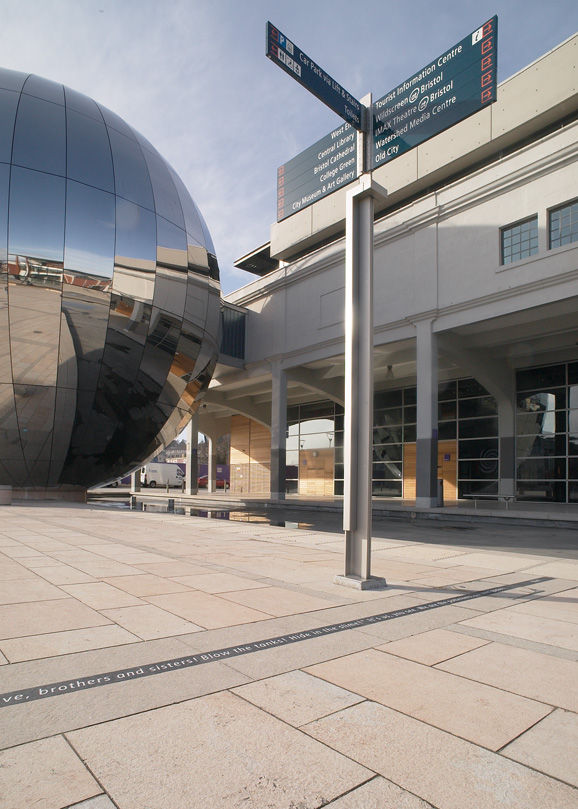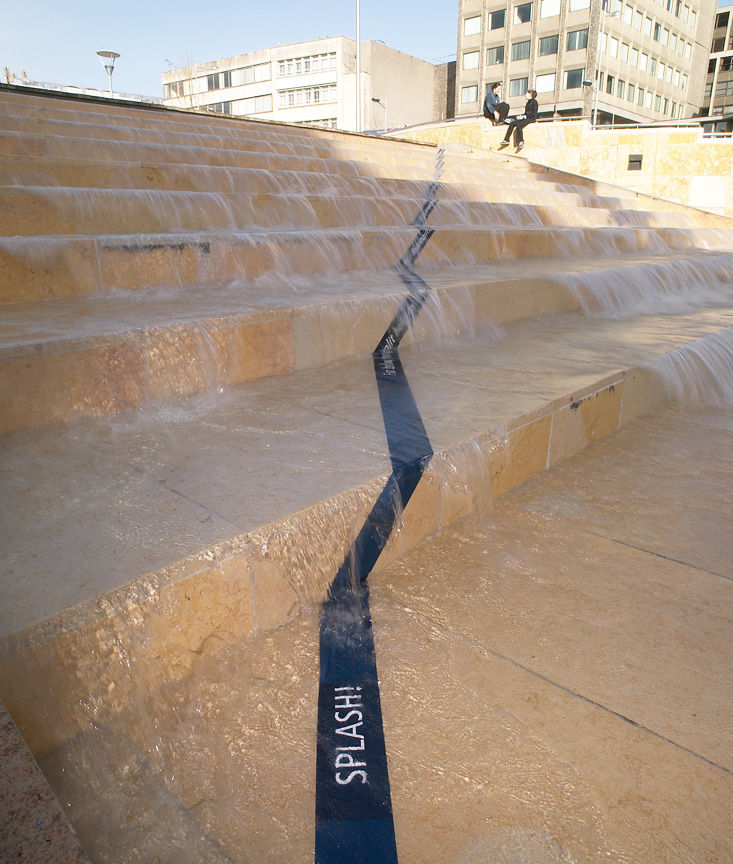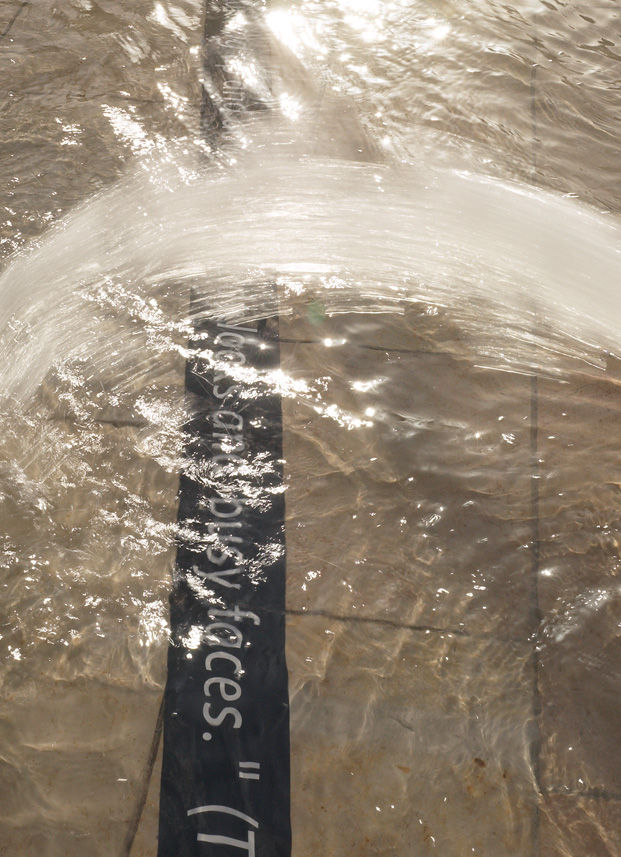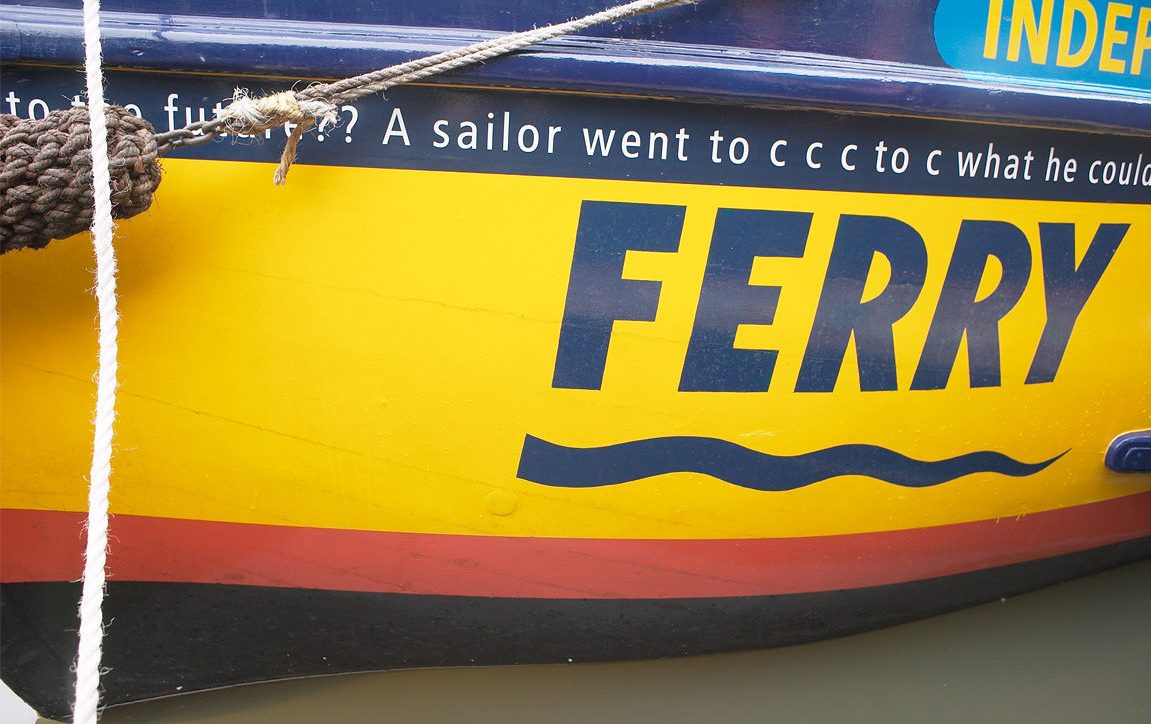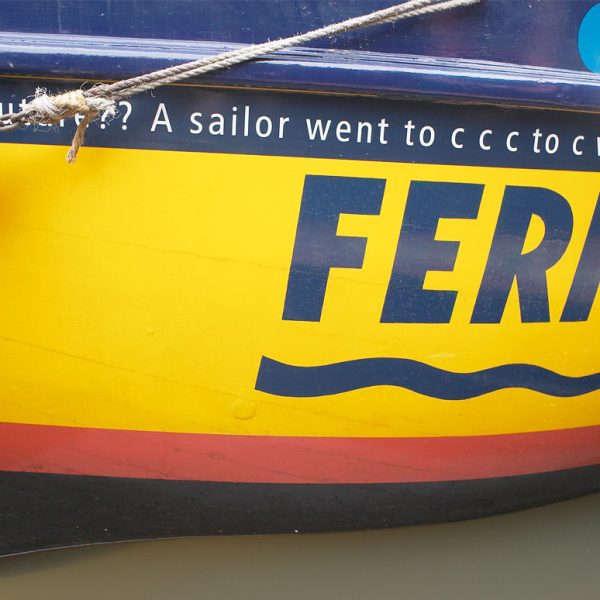
Synopsis
Walkie-Talkie was a temporary art commission designed to appear hand in hand with the then new Bristol Legible City pedestrian sign system. It was the first in a series of artists’ commissions linked with Bristol Legible City and was a collaboration between launch artist Colin Pearce and launch poet Ralph Hoyte, who were jointly commissioned in spring 2000 by Bristol Legible City and Poetry Can.
Description
Walkie Talkie thread its way across Millennium Square, in Bristol’s centre, and across spaces, floors and buildings around the At Bristol complex during February and March, 2001. It consisted of a thin line of language, approximately 3000 words, in a strip 10cm wide and over 640 metres long. The concept for the work is to imagine the finger posts of the sign system have fallen to the ground and been arranged into a single long line. Referring directly to the permanent signs via placement, colour linkage and font format, the text line appears to have been set free to career off and mingle with the fabric of the city.
The project was created to temporarily introduce a poetic parallel information source into the city spaces, taking the form of long threads of text (pavement graphic) which were created especially for the project. Seen on various surfaces the text interventions contained a number of historical and contemporary themes as well as fragments of poetry and overheard conversation. Walkie Talkie began a physical and conceptual dialogue with the fabric of the city making audible the voices and stories that often go unheard.
Fashion Architecture and Taste (FAT), who were the Legible City lead artists during the time collaborated with a multi disciplinary design team investigating ‘identity for integrated transport’ and interventions along the ‘Blue Route’ pedestrian network linking Temple Meads to Harbourside.
Bristol Legible City
Bristol Legible City is a unique concept to improve people’s understanding and experience of the city through the implementation of identity, information and transportation projects. Bristol Legible City projects include direction signs, on street information panels with city and area maps, printed walking maps, visitor information identity and arts projects. These projects communicate the city consistently and effectively to visitors and residents alike.
Over 40 communication projects have already been implemented, or are in development. The pedestrian signing system helps visitors find their way around the city centre and encourages people to explore the local area on foot or by using public transport. The projects have provided a sense of welcome for visitors and a better understanding of Bristol’s attractions.
Ralph Hoyte
Ralph Hoyte is a Bristol-based full-time professional poet, writer and artist. Ralph believes ‘poetry’ is a live art. His practice includes declamatory public poetry, sculptural poetry and literary content for pervasive, or context-aware media applications. He specializes in epic poetry and ballads (from about 40min to 3 1/2 hrs declamation time). His sculptural work is, usually, word-based and realised in collaboration with sculptors.
One of Ralph’s current major interests is the role of emerging digital technologies in 21st century literature, and specifically that of so-called ‘pervasive media’ (or ‘context-aware media’). In this field, Ralph idea-initiated then (with filmmaker Liz Crow) co-wrote, -directed and -produced 1831 RIOT! ‘the world’s first GPS-triggered pervasive media play’, based in Queen Square, Bristol, for Mobile Bristol & Hewlett-Packard Labs. Having recently completed a pervasive media producers summer school (with the Digital Cultures Research Centre of the University of the West of England), Ralph is actively seeking partners to produce context-aware applications in the areas of literature, poetry and live art. As a live art performer, Ralph is actively seeking opportunities to perform his epic poems and ballads (‘the mytho-poetic voice’) as well as his distinctive ‘fragmentary’ 21st century poetry.
Colin Pearce
Colin Pearce is an experienced artist and curator of Public Art commissions / live art projects (especially site specific artist-led ones) with specialisms in video installation and large format image projection and architectural lighting.
He was a founder member of radical artist collective Fine Rats International (1990-1995), and commissioned video artist for The Seachange Initiative, East Anglia (1995-1997), he was Artist for The Gallery in the Trees project, Birmingham (1999 – 2000) and Optima Housing Association, Year of the Artist commissioned artist (2001 – 2002).
In 2002 he led a bid for the Architectural Lighting proposal for Capital of Culture Bid and was artist in residence at Gallery 37 during 2005. From 2005-2006 he worked on the Public Art commission for Six Ways Gateway, Erdington.
Pearce was also Chair of Management of Birmingham Centre for Media Arts, now VIVID from 1994-99.


